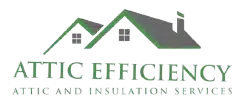What is energy efficient insulation?
Energy-efficient insulation is a type of material that helps regulate the temperature inside your home, keeping it warm in the winter and cool in the summer. It works by reducing the amount of heat transfer through your walls, ceilings, and floors. This can lead to lower energy bills and a more comfortable living environment. Common types of energy-efficient insulation include fiberglass, cellulose, and foam board. Insulating your home can also reduce noise pollution and improve the overall energy efficiency of your property.
![]()
Importance of energy efficient insulation
Energy efficient insulation is crucial for maintaining a comfortable temperature in your home while reducing energy consumption. By properly insulating your home, you can lower your energy bills, decrease your carbon footprint, and improve the overall efficiency of your heating and cooling systems. Insulation helps to regulate indoor temperatures, keeping your home warm in the winter and cool in the summer, reducing the strain on your HVAC system. This not only saves you money but also benefits the environment by reducing greenhouse gas emissions.
Types of energy efficient insulation
There are different types of energy efficient insulation you can use for your home. Fiberglass, cellulose, foam, and radiant barrier are some common options available. Each type has its own advantages and characteristics.
- Fiberglass is a popular choice and is known for its affordability and fire resistance.
- Cellulose is made from recycled paper and is great for its eco-friendly nature and ability to fill small spaces.
- Foam insulation provides a strong barrier against heat transfer and is ideal for areas with limited space for insulation.
- Radiant barrier is effective in reflecting heat away from the home, keeping it cooler in hot weather.
Choosing the right type of insulation depends on factors like your budget, the area you need to insulate, and your environmental preferences.
Benefits of energy efficient insulation
Energy efficient insulation can help you save money on your energy bills by keeping your home cooler in the summer and warmer in the winter. By reducing the amount of energy needed to heat or cool your home, you can lower your carbon footprint and contribute to a more sustainable environment. Insulation can also improve the comfort of your living space by regulating temperature and reducing noise. Additionally, it can help prevent moisture buildup, which can lead to mold and mildew growth.
Fiberglass insulation – features and benefits
Fiberglass insulation is a popular choice for many homes because it is affordable and easy to install. It is lightweight, fire-resistant, and does not absorb moisture, making it a durable option for insulating your home. Fiberglass insulation can help reduce your energy bills by keeping your home warm in the winter and cool in the summer. Additionally, it is an environmentally friendly option, as it is made from recycled materials.
Spray foam insulation – pros and cons
When it comes to spray foam insulation, there are both advantages and disadvantages to consider. Here’s what you need to know:
-
Pros:
- Provides excellent air sealing properties, reducing energy waste
- Offers high insulation value, keeping your home comfortable
- Helps in blocking moisture, preventing mold and mildew growth
-
Cons:
-
Can be expensive compared to other insulation types
-
Requires professional installation due to its complex application process
-
Not a DIY-friendly option for most homeowners
Cellulose insulation – eco-friendly option
Cellulose insulation is a top eco-friendly choice for insulating homes. It is made from recycled paper and treated with fire-retardant chemicals. Cellulose insulation helps in reducing energy bills by keeping your home warm in winter and cool in summer. This insulation type is environmentally friendly and helps in reducing waste by using recycled materials.
Reflective foil insulation – how it works
Reflective foil insulation bounces back heat that strikes it, preventing it from entering the building. The foil surface and air pocket within the insulation combine to reduce heat transfer. Reflective foil insulation is effective in hot climates, as it reflects heat away from the building, keeping it cooler inside.
Installation considerations for energy efficient insulation
When installing energy efficient insulation, it’s important to consider factors like the R-value of the insulation, the climate of your area, and the area of your home that needs insulating. Here are some key installation considerations for energy efficient insulation:
-
-
R-value: Make sure to choose insulation with the appropriate R-value for your climate zone to maximize energy efficiency.
-
Moisture resistance: Consider using moisture-resistant insulation in areas prone to dampness to prevent mold and mildew growth.
-
Air sealing: Properly seal any gaps or cracks in your home before installing insulation to ensure maximum effectiveness.
-
Installation method: Follow manufacturer guidelines for installation to ensure the insulation performs as intended.
-
Professional installation: It’s recommended to hire a professional installer for complex or large-scale projects to ensure proper installation and optimal energy efficiency benefits.
Maintenance tips for energy efficient insulation
To maintain your energy efficient insulation and ensure its efficacy, it is important to regularly check for any signs of wear or damage. Be on the lookout for moisture, mold, or pest infestations that can compromise the insulation’s performance. Additionally, seal any gaps or cracks that may have developed to prevent air leaks. Schedule routine inspections with a professional to address any issues promptly and maintain the insulation’s energy-saving benefits.

